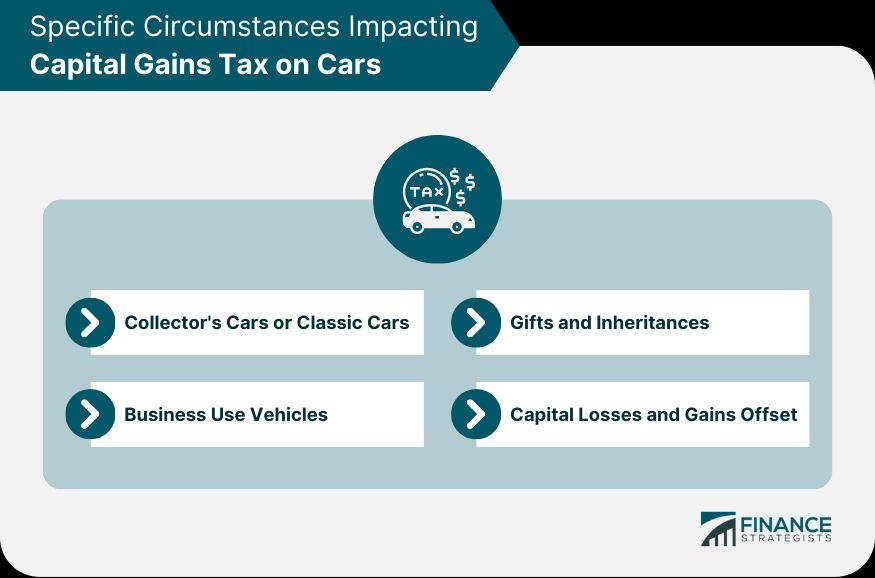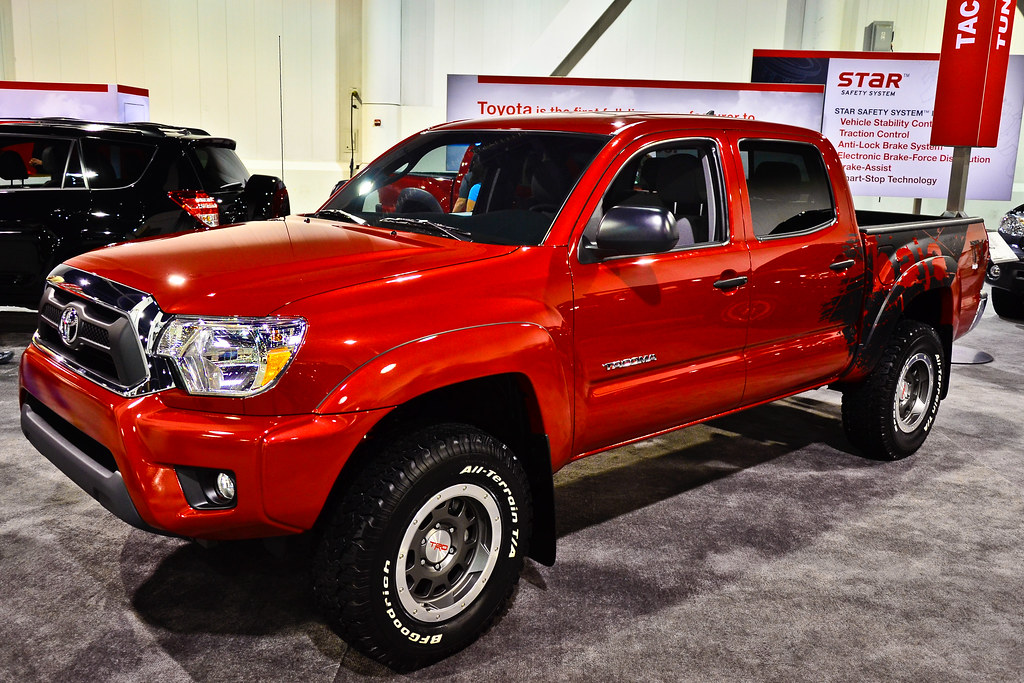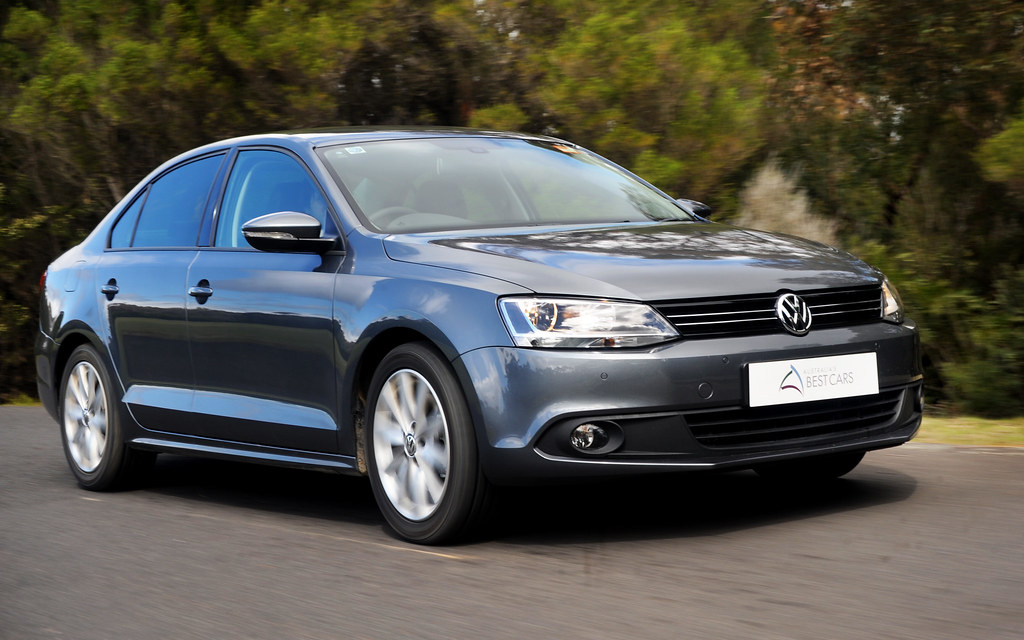
Car flipping in 2025 is no longer the underground hustle it once was. With the rise of online car marketplaces, real-time auction platforms, and data-driven pricing apps, buying and reselling vehicles for profit has evolved into a semi-professional game. It now demands a sophisticated blend of timing, intuition, and technical knowledge, transforming casual reselling into a strategic endeavor for many.
However, as the market has grown more accessible, so too have the risks and the rewards. For every vehicle that promises thousands in clean profit, another lurks, ready to drain bank accounts through rapid depreciation, poor demand, or misunderstood ownership costs. In this intricate landscape, understanding which vehicles are poised for profitable flips versus those that hemorrhage value is not just useful, but absolutely critical for anyone looking to succeed.
What truly separates the winners from the losers in today’s dynamic flip economy lies at the intersection of several key factors: scarcity, cultural momentum, mechanical trust, and buyer emotion. The most successful flips in 2025 tend to hit at least three of these marks, often being underproduced or in high demand, offering features new buyers can’t easily access, and carrying an aspirational quality. This guide will provide a clear, strategic breakdown of what’s genuinely flipping for profit and what’s almost guaranteed to cost you money, rooted in current market behavior, buyer psychology, and emerging resale trends.
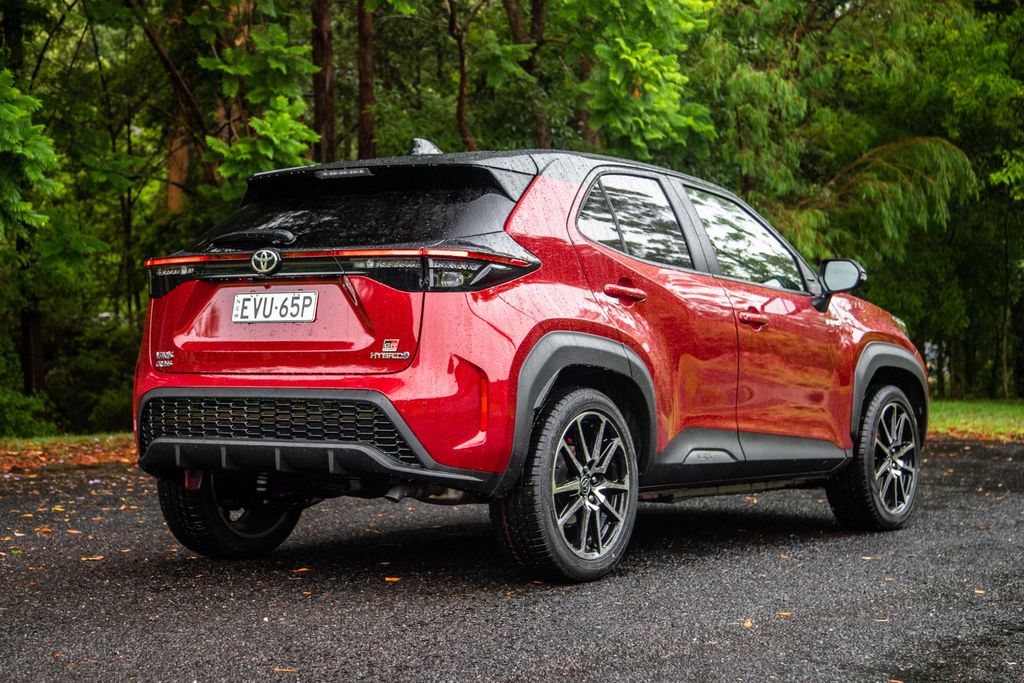
1. **Toyota GR Corolla**
The Toyota GR Corolla has rapidly ascended to become a crown jewel in the world of car flipping as we navigate 2025. This high-performance hot hatch, developed by Toyota’s revered Gazoo Racing division with input from World Rally Championship engineers, unexpectedly captured the attention of both dedicated enthusiasts and shrewd speculators. Its profound profitability as a flip stems from a near-perfect alignment of scarcity, intense market demand, and significant cultural relevance, making it a standout in a crowded performance segment.
What lends the GR Corolla its extraordinary flipping potential is not just its immediate performance, but its deep-seated legacy. Unlike many performance hatchbacks that quickly fade into obscurity after their initial launch, the GR Corolla skillfully taps into the rich heritage of Toyota’s rally roots, notably drawing parallels to the much-loved AE86 and the iconic Celica GT-Four. This connection allows it to offer a thoroughly modern package while simultaneously evoking a powerful sense of nostalgia and performance pedigree. Toyota’s strategic decision to produce the GR Corolla in strictly limited quantities further amplifies its appeal, turning it into a highly sought-after commodity for dedicated collectors, astute investors, and a legion of eager buyers who regretfully missed out on early allocations.
One of the most compelling reasons behind the GR Corolla’s exceptional resale performance is its exclusivity, largely shaped by supply chain dynamics. While this car was never intended for mass-market distribution, the pervasive global chip shortage and various manufacturing delays exacerbated existing bottlenecks, tightening its availability even further. This meant that very few units actually reached dealership floors, especially the highly coveted top-spec Circuit and Morizo Editions, creating an immediate scarcity that fueled intense demand. Prospective buyers eager to secure one of these rare trims often encountered extensive waitlists or were informed that orders simply couldn’t be placed.
For the fortunate few who managed to acquire a unit early, the resale market quickly transformed into a goldmine. The Morizo Editions, in particular, which boast lighter weight, increased torque, and track-tuned enhancements, have been documented selling for an astonishing $10,000 to $20,000 above their Manufacturer’s Suggested Retail Price (MSRP) in private sales and at specialized enthusiast auctions. This robust premium highlights the vehicle’s unique position.
From a car flipper’s strategic viewpoint, the GR Corolla presents an unusually low-risk, yet remarkably high-reward opportunity. It masterfully combines the legendary reliability and unwavering brand trust associated with Toyota with the undeniable cultural cachet of a high-performance JDM (Japanese Domestic Market) car. Buyers in this particular niche market are frequently driven by strong emotional factors, including profound nostalgia, a potent fear of missing out (FOMO), and the car’s compelling appeal as a potential future classic. This deep emotional connection makes price sensitivity far less of a concern than with standard, mass-produced vehicles.
This emotional premium directly empowers sellers to confidently push asking prices well above what would typically be considered acceptable in the conventional used car market. As of mid-2025, the resale curve for the GR Corolla continues its impressive upward trajectory, a trend particularly pronounced for first-year models that boast low mileage and comprehensive documentation, solidifying its status as a consistently profitable flip.
Beyond its raw performance and inherent scarcity, the GR Corolla significantly benefits from a vibrant, community-driven demand that amplifies its market presence. Active online forums, influential YouTube reviewers, and popular track day influencers have collectively generated a powerful halo effect around the car. This widespread digital engagement means that individuals who might never have previously considered owning a hot hatch now perceive the GR Corolla as a definitive statement of refined taste and advanced performance knowledge. The vehicle is increasingly regarded as a piece of cultural capital, transcending its basic function as merely a mode of transportation. For astute flippers, this phenomenon opens doors to a significantly broader and more diverse buyer pool. This includes not only dedicated drivers but also serious collectors and even shrewd investors who view the GR Corolla as a blue-chip asset in an automotive era where pure, analog driving experiences are becoming increasingly rare and cherished. This situation exemplifies a textbook case of how intense passion, inherent rarity, and brilliant branding converge to forge one of 2025’s most reliably profitable flip candidates.
Car Model Information: 2024 Buick Enclave Premium FWD
Name: Toyota GR Corolla
Caption: 2024 GR Corolla Circuit Edition (Canada)
Manufacturer: Toyota
ModelCode: GZEA14
Production: 2022–present
ModelYears: 2023–present
Assembly: Unbulleted list
Designer: Sungwon Lee and Masayuki Sugiura
Class: Hot hatch
BodyStyle: hatchback
Layout: Front-engine, four-wheel-drive
Platform: Toyota TNGA-C platform
Related: Unbulleted list
Engine: Unbulleted list
Powerout: cvt
Transmission: unbulleted list
Wheelbase: cvt
Length: cvt
Width: cvt
Height: cvt
Weight: cvt
Sp: us
Categories: All-wheel-drive vehicles, All Wikipedia articles written in American English, All articles with unsourced statements, Articles containing Japanese-language text, Articles with short description
Summary: The Toyota GR Corolla (Japanese: トヨタ・GRカローラ, Hepburn: Toyota Jīāru Karōra) is a compact car manufactured by Japanese marque Toyota since 2022 with assistance from the company’s Gazoo Racing (GR) division. It is a hot hatch variant of the E210 series Corolla.
The GR Corolla was introduced on March 31, 2022. The GR Corolla is built mainly for the North American market as Europe received the GR Yaris (which is not sold in Canada and the United States). Both vehicles are assembled at the “GR Factory” inside the Motomachi plant, a production line dedicated to GR-branded vehicles. Aside from North America, the GR Corolla is also sold in Japan, Thailand, Malaysia, Australia, New Zealand, Brazil, South Africa, and Indonesia.
Beginning in 2026, the GR Corolla for the North American market will be produced in Burnaston, England.
Get more information about: Toyota GR Corolla
Buying a high-performing used car >>>
Brand: Toyota Model: GR Corolla
Price: $29,997 Mileage: 37,001 mi.
Read more about: Unleash the Beasts: 12 Simple 4x4s That Absolutely Dominated as Off-Road Kings, Then and Now!

2. **Porsche 911 (997.2 Generation)**
The illustrious Porsche 911 is, of course, a perennial fixture in automotive investment discussions. However, within its storied lineage, the 997.2 generation, produced from 2009 to 2012, has singularly emerged as a distinct flipping favorite in 2025. This particular era resonates deeply with savvy enthusiasts who possess an intuitive understanding of how Porsche’s intricate value trends truly operate. What makes the 997.2 so uniquely compelling is its significant position as the final iteration of the “analog-feeling” 911s before the sweeping transition to a predominantly digital experience in the subsequent 991 generation. This places it in an enviable sweet spot within the extensive 911 timeline—a car that offers modern capabilities seamlessly blended with an undeniable old-school charm.
This generation boasts a suite of highly desirable characteristics that underpin its growing value. It features hydraulic steering, delivering a tactile, unfiltered connection to the road that later models struggle to replicate. Many variants, especially the revered Carrera S and GTS trims, are powered by naturally aspirated engines, celebrated for their linear power delivery and intoxicating sound. Furthermore, the 997.2 maintains a clean, timeless silhouette that, even today, commands attention and admiration, effortlessly turning heads wherever it goes. While contemporary Porsches undeniably offer superior speed and enhanced refinement, the 997.2 provides something far more intangible and increasingly cherished: a raw, unadulterated connection to the driving experience. This visceral engagement is a quality that a burgeoning number of discerning buyers now prioritize more highly than mere outright speed or cutting-edge technology.
From a market perspective, this particular generation of the 911 has witnessed a sharp and sustained uptick in price appreciation, a trajectory that shows no signs of slowing down as we move deeper into 2025. Car flippers who astutely acquired clean examples just a few short years ago, typically in the $40,000 to $60,000 range, are now finding themselves in a position to confidently resell these vehicles for an impressive $70,000 to $100,000 or even more. The final price, of course, hinges on critical factors such as the vehicle’s impeccable condition, its meticulously documented service history, and its precise factory specification. Key value boosters include the highly coveted six-speed manual transmission, which is a significant draw for purists, and the presence of rare, desirable factory options like the Sport Chrono Package, PASM (Porsche Active Suspension Management), and performance-enhancing sport exhaust systems. The limited-production GTS models, in particular, are exceptionally hot commodities within the flipping scene, frequently generating five-figure profits for those sellers who were strategic enough to acquire them early. The coupe body style, especially when paired with rear-wheel drive and a manual gearbox, is widely regarded as the purest and most authentic expression of the 911 experience, commanding a consistently higher resale premium in the market.
What truly distinguishes the 997.2 from typical, more immediate flip candidates is its inherent nature as an appreciating asset, rather than just a new vehicle quickly losing value. It behaves more like a carefully selected piece of art or a rare vintage watch, whose value steadily grows over an extended period rather than peaking immediately post-purchase. This long-term appreciation is a critical distinction for flippers who adopt a more strategic, investor-like approach to their acquisitions. Buyers in this specialized market segment are notably discerning and exceptionally well-informed. They are generally not hunting for mere “deals”; instead, they are meticulously searching for the absolute “right car”—a vehicle that often comes with a complete portfolio of documentation, exceptionally low mileage, and a pristine, meticulously maintained service record. Consequently, a well-preserved 997.2 transforms into a highly liquid and immensely desirable asset within the secondary market, making it an ideal candidate for profitable flipping, provided one has the necessary capital to acquire such a prime example.
Furthermore, the inherent brand power of Porsche ensures an exceptionally strong residual value, arguably surpassing nearly every other manufacturer in the automotive industry. With the increasing proliferation of stringent emissions regulations and the relentless advance of the electric vehicle (EV) wave, combustion-engine Porsches—especially those without turbochargers or complex hybrid drivetrains—are rapidly becoming potent status symbols of a rapidly disappearing era. Many buyers in 2025 perceive the 997.2 as the definitive “last real” 911, an authentic driver’s car before the advent of modern conveniences began to dilute the car’s raw, visceral appeal. This potent wave of nostalgia, combined with a vast global collector base and Porsche’s unparalleled racing pedigree, imbues the 997.2 with an evergreen desirability that most other cars can only dream of. As a flipping endeavor, it doesn’t merely generate substantial profits; it significantly solidifies a seller’s reputation within car circles as an individual who possesses an astute and profound understanding of the automotive market.
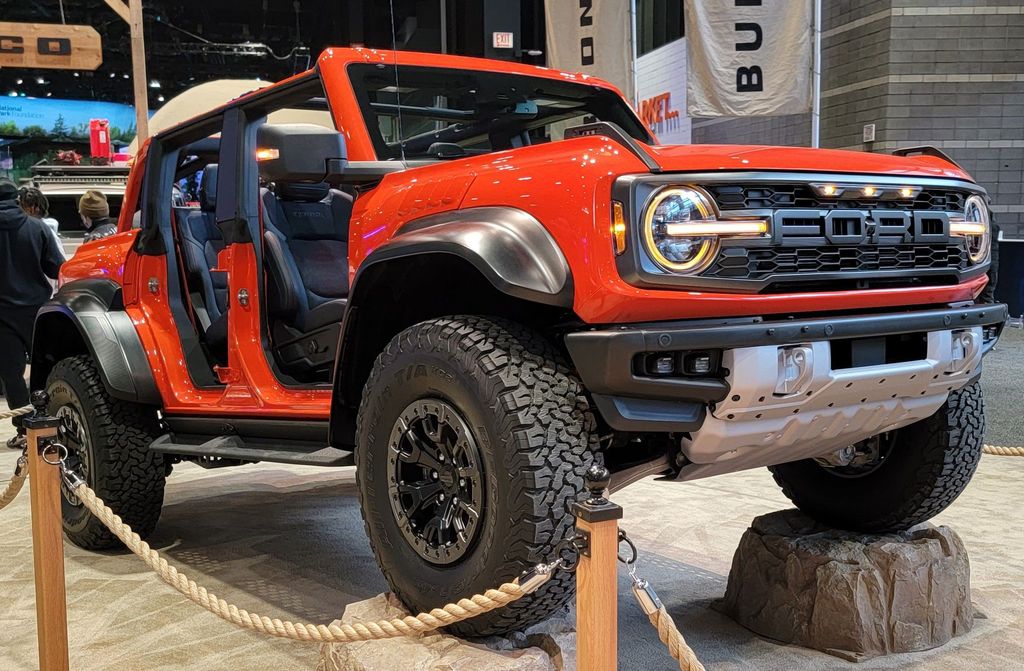
3. **Ford Bronco Raptor**
The Ford Bronco Raptor continues its impressive reign, dominating the high-profit flipping segment in 2025. This formidable off-road machine is a testament to the fact that extreme off-road performance and exclusivity can be just as, if not more, lucrative than traditional sports cars, especially when market conditions align perfectly. Initially introduced as the halo version of the highly anticipated revived Bronco lineup, the Raptor trim took every commendable aspect of the standard Bronco and amplified it to unprecedented levels, creating a vehicle that pushes boundaries.
This beast boasts a potent 3.0L twin-turbo EcoBoost engine, unleashing a formidable 418 horsepower, paired with long-travel Fox suspension, massive 37-inch tires, and a significantly widened body stance. Every element of its design and engineering was meticulously crafted for high-speed desert racing and the most extreme off-road adventures. Yet, beyond its awe-inspiring, trail-ready specifications, it is the colossal market demand and meticulously managed limited production that have consistently kept it firmly within the crosshairs of astute car flippers, ensuring its enduring profitability.
Many Bronco Raptors, ironically, never even graced traditional showroom floors in the conventional sense. Dealerships frequently either applied substantial markups, often tens of thousands of dollars above MSRP, or discreetly funneled their limited allocations to their most premium customers and influential insiders. Those fortunate individuals who managed to secure an early order—particularly for vehicles in highly popular colors or equipped with top-tier option packages—often found themselves in the enviable position of owning vehicles that were immediately worth an impressive $20,000 to $30,000 more than their initial purchase price. Even lightly used models with just a few thousand miles on the odometer are consistently commanding prices well above MSRP within passionate enthusiast and collector circles. This phenomenon is partly attributable to Ford’s strategic structuring of supply, but it is also significantly driven by crucial cultural timing: the iconic Bronco nameplate made its triumphant reemergence at a moment when overlanding and off-roading activities were experiencing an unprecedented surge in popularity, fueled by pervasive social media trends, lifestyle branding, and a collective post-pandemic wanderlust.
Flipping a Bronco Raptor is also considerably facilitated by its remarkably broad and diverse buyer demographic. This extraordinary vehicle appeals to a wide spectrum of consumers, including hardcore off-road enthusiasts, cutting-edge tech junkies, serious vehicle collectors, and even suburban buyers who simply desire a truck that unequivocally stands out from the crowd. It functions as a powerful, rolling statement of both personality and capability, attracting attention and admiration wherever it goes. This expansive appeal means the buyer pool is exceptionally diverse and, critically, willing to spend a premium for the privilege of ownership. Furthermore, unlike certain other off-road vehicles that struggle to justify their hefty price tags, the Bronco Raptor has garnered widespread critical acclaim from automotive media, influential content creators, and real-world users alike. This robust credibility has firmly solidified its place as far more than a mere gimmick; it is recognized as a serious, high-performance machine with enduring appeal and lasting value.
Adding to its lucrative flipping potential, Ford has indicated that the production numbers for the Raptor trim may remain deliberately limited. This limitation is largely due to ongoing supplier constraints and the intricate balancing act of profit margins with other models in their extensive lineup. This strategic restriction perpetuates the highly desirable scarcity dynamic, effectively ensuring that the profitable flipping window for the Bronco Raptor remains open for a longer duration than it typically would for a mass-produced vehicle. For savvy flippers, this scenario is nothing short of a dream: a perfect confluence of limited supply, a strong and sustained cultural presence, and consistent, high-demand from well-funded buyers. Whether sold through esteemed auction platforms like Bring a Trailer, via discreet private listings, or through strategic dealer trade-ins, the Ford Bronco Raptor stands out as one of the most consistently profitable and high-margin flips available in the 2025 automotive market.
Car Model Information: 1970 Ford Bronco
Name: Ford Bronco
Caption: 2021 Ford Bronco Outer Banks (4-door)
Manufacturer: Ford Motor Company
Production: 1965–1996,2021–present
Class: Compact SUV
Layout: Front-engine, four-wheel-drive
BodyStyle: SUV
Successor: Ford Expedition
ModelYears: 1966–1996,2021–present
Categories: 1970s cars, 1980s cars, 1990s cars, 2020s cars, All-wheel-drive vehicles
Summary: The Ford Bronco is a model line of SUVs manufactured and marketed by Ford. The first SUV model developed by the company, five generations of the Bronco were sold from the 1966 to 1996 model years. A sixth generation of the model line was introduced for the 2021 model year. The nameplate has been used on other Ford SUVs, namely the 1984–1990 Bronco II compact SUV, the 2021 Bronco Sport compact crossover, and the China-only 2025 Bronco New Energy.
Originally developed as a compact off-road vehicle using its own chassis, the Bronco initially competed against the Jeep CJ-5 and International Scout. For 1978, Ford enlarged the Bronco, making it a short-wheelbase version of the F-Series pickup truck; the full-size Bronco now competed against the Chevrolet K5 Blazer and Dodge Ramcharger.
Following a decline in demand for large two-door SUVs, Ford discontinued the Bronco after the 1996 model year, replacing it with the four-door Ford Expedition; followed by the larger Ford Excursion. After a 25-year hiatus, the sixth-generation Bronco was reintroduced in 2021 as a mid-size two-door SUV. It is also offered as a full-size four-door SUV with a 16 in (41 cm) longer wheelbase. It competes directly with the Jeep Wrangler as both a two-door and a four-door (hardtop) convertible.
From 1965 to 1996, the Ford Bronco was manufactured by Ford at its Michigan Truck Plant in Wayne, Michigan, where it also manufactures the sixth-generation version.
Get more information about: Ford Bronco
Buying a high-performing used car >>>
Brand: Ford Model: Bronco
Price: $79,999 Mileage: 3,000 mi.
Read more about: Forging Ahead: The 9 Most Anticipated American Muscle Cars Blazing Trails to 2026
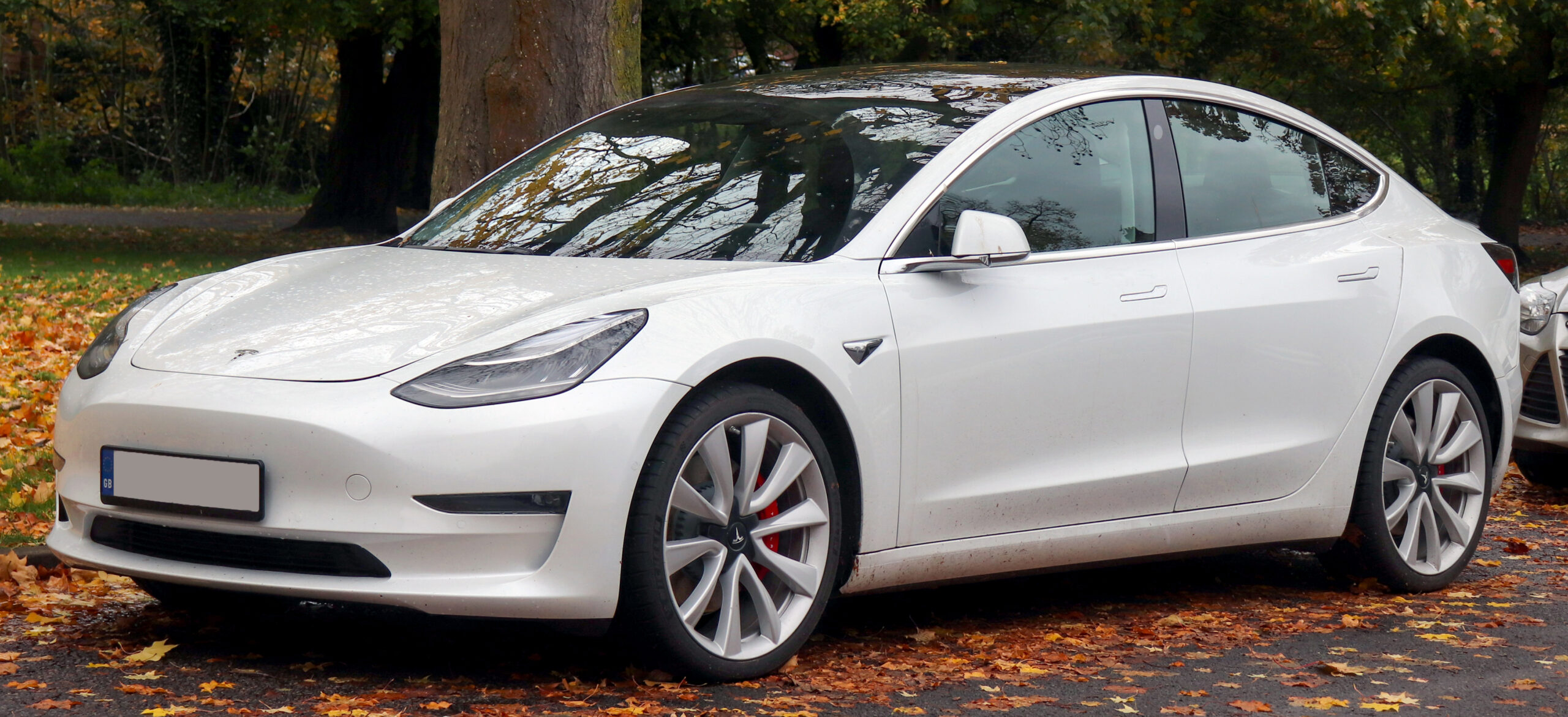
4. **Tesla Model Y Performance**
In 2025, a period where many other electric vehicles (EVs) are beginning to face mild depreciation due to rapid innovation cycles, the Tesla Model Y Performance distinguishes itself as a rare electric vehicle that consistently holds, and in some instances even increases, its value post-sale. Tesla has skillfully managed to defy typical car market behavior by crafting vehicles that not only retain fervent consumer interest but also actively grow in desirability. This remarkable feat is largely attributed to the tech-forward, software-upgradable nature of their advanced platforms. The Model Y Performance, specifically, hits a unique and highly profitable sweet spot: it delivers blistering speed, incorporates advanced self-driving capabilities, and presents itself in a versatile crossover body style that appeals to the largest and most influential buyer segment in the automotive world today.
Unlike traditional internal combustion engine (ICE) vehicles, which are primarily valued based on their mechanical condition and accumulated mileage, Teslas are uniquely valued, in part, on their embedded software features, most notably Full Self-Driving (FSD) capability. If a shrewd flipper was able to secure a Model Y Performance with access to the FSD beta program, that particular car instantaneously becomes worth significantly more in the private resale market, even if it happens to be slightly older or has higher mileage. Buyers are consistently willing to pay a premium for specific configurations that are either currently unavailable directly from Tesla or require unacceptably long wait times to acquire. Some agile flippers are reportedly realizing impressive profits of $7,000 to $10,000 on low-mileage, FSD-equipped units, particularly those featuring rare wheel or interior options that enhance their exclusivity.
There is also a palpable speculative element inherent in flipping Teslas, especially in the evolving market of 2025. This is driven by the company’s frequent and impactful software updates and its continuous, ambitious promises regarding autonomous vehicle technology, all of which relentlessly stoke buyer excitement and anticipation. In stark contrast to ICE vehicles, which depreciate in a largely predictable manner based on wear and tear, Tesla vehicles maintain a sense of newness for a longer duration because their features are continuously evolving and improving through over-the-air updates. This extended digital shelf-life significantly enhances resale confidence, empowering flippers to credibly pitch the car as “future-proof” or “next-gen ready”—a remarkably rare claim in the traditionally static world of automotive resales. Furthermore, because Tesla operates without a network of third-party dealers, the MSRP for new vehicles is transparent and readily available. This transparency means buyers are well-informed about the cost of a new model, allowing them to rationally justify paying a slight premium to acquire the exact version they desire immediately, especially in regions where production backlogs and waitlists persist.
From a crucial brand perception standpoint, owning a Tesla continues to carry a significant and undeniable amount of social currency. The Model Y Performance, with its exhilarating 3.5-second 0–60 mph acceleration time and its hallmark minimalist luxury aesthetic, appeals to a broad and affluent demographic. This includes successful professionals, cutting-edge tech enthusiasts, and status-seeking buyers alike, all drawn to its unique blend of performance and prestige. In 2025, it steadfastly remains a crossover unicorn—an electric vehicle that is simultaneously exceptionally fast, eminently family-friendly, and still notoriously difficult to acquire with certain highly desirable configurations. All these factors converge to make it a consistently solid, and increasingly rare, candidate for profitable flipping in an automotive world where rapid EV depreciation is typically the expected rule, rather than the profitable exception.
Car Model Information: 2024 Buick Enclave Premium FWD
Name: Tesla Model Y
Caption: Pre-refresh Tesla Model Y
Manufacturer: Tesla, Inc.
Production: January 2020 – present
Assembly: Unbulleted list
Designer: Franz von Holzhausen
Class: Unbulleted list
BodyStyle: SUV
Layout: Unbulleted list
Related: Unbulleted list
Motor: unbulleted list
Battery: val,Lithium-ion battery
ElectricRange: FTP-75
Charging: unbulleted list
Wheelbase: Unbulleted list
Length: Unbulleted list
Width: Unbulleted list
Height: Unbulleted list
Weight: Unbulleted list
Sp: us
Categories: 2020s cars, All Wikipedia articles written in American English, All articles lacking reliable references, All articles that may contain original research, All articles to be expanded
Summary: The Tesla Model Y is a battery electric compact crossover SUV produced by Tesla, Inc. since 2020. The vehicle was presented in March 2019 as the company’s fifth production model since its inception after the Roadster, Model S, Model X and Model 3.
After its 2019 introduction, the Model Y started production at the Tesla Fremont Factory in California, US in January 2020. Production at Giga Shanghai, China was added in December 2020, and at Gigafactory Texas, US since late 2021. Deliveries from Gigafactory Berlin-Brandenburg, Germany started in March 2022.
The Model Y is based on the Model 3 sedan and serves as a larger variant, with around 76 percent of parts being shared between the two and identical exterior and interior styling. While most Model Y are configured with two-row seating, in the US the Model Y offered optional third-row seats for a seven-passenger seating capacity until the 2025 refresh.
In 2023, Tesla delivered 1.2 million Model Ys, making it the world’s best-selling vehicle that year, surpassing the Toyota Corolla and becoming the first electric vehicle to claim that title. With at least 2.16 million units delivered since its start of production up to December 2023, the Model Y is also the most popular electric vehicle of all time. In 2024 sales were second to the Toyota RAV4. A refreshed version of the Model Y was revealed in January 2025, with upgrades similar to the upgraded Model 3.
In mid-2025, Tesla unveiled and released the Model Y L, a long-wheelbase, six-seat variant of the Model Y.
Get more information about: Tesla Model Y
Buying a high-performing used car >>>
Brand: Tesla Model: Model Y
Price: $29,997 Mileage: 37,001 mi.
Read more about: Navigating the Chill: Essential Tips for Maximizing Your EV’s Performance and Range This Winter
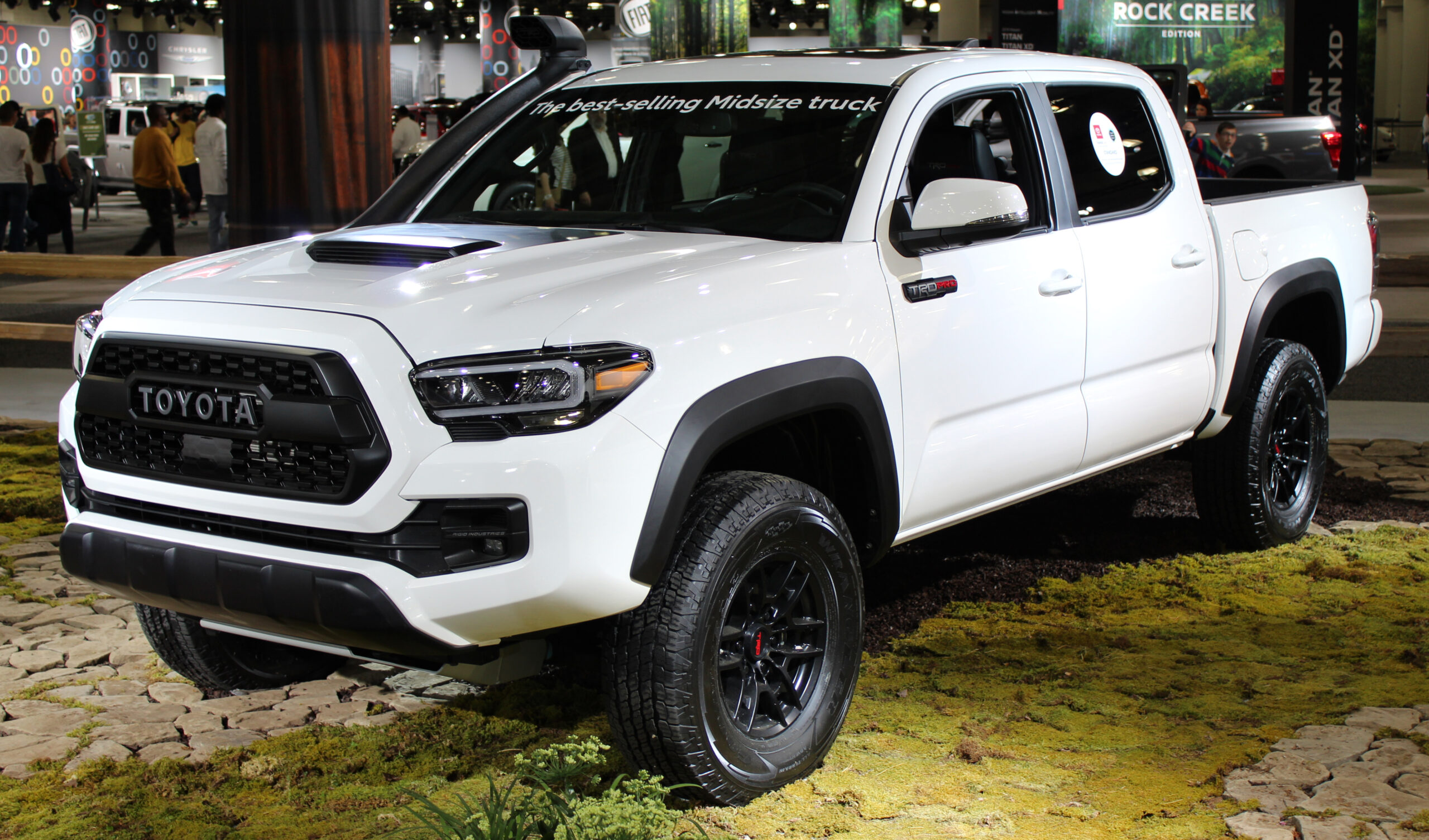
5. **Toyota Tacoma TRD Pro**
The Toyota Tacoma TRD Pro is undeniably one of the few vehicles in 2025 that continues to defiantly resist traditional depreciation logic, especially within the fiercely competitive off-road truck market. Even as newer generations are introduced and rival manufacturers relentlessly attempt to catch up, the TRD Pro stands firm as an unyielding icon of legendary reliability, unparalleled capability, and an almost unbreakable brand loyalty. While the majority of trucks typically experience significant depreciation during their initial few years of ownership, the Toyota Tacoma, particularly in its highly coveted TRD Pro trim, maintains its value with exceptional tenacity.
Certain configurations of the TRD Pro are even showing signs of appreciation in the private market, a phenomenon driven by excessively long waitlists, consistently strong demand, and Toyota’s deliberate, strategic limitations on production volume. For astute flippers who are able to secure one, it consistently ranks as one of the most reliable vehicles for generating substantial net profit in resale. Its flipping success is fundamentally driven by Toyota’s sterling reputation for durability and its unwavering credibility in the challenging off-road segment. The TRD Pro trim, equipped with its comprehensively upgraded suspension, robust skid plates, and aggressively distinctive styling, appeals powerfully to both dedicated off-road enthusiasts and a significant demographic of lifestyle buyers. These buyers, even if they never intend to venture off paved roads, desire the rugged image and the proven resale strength of a truly “go-anywhere” truck.
Unlike many niche trims that quickly lose their initial luster, the TRD Pro has steadfastly held its value year after year, partly because Toyota very rarely, if ever, overproduces them. This is a classic, textbook case of market demand consistently and significantly outpacing available supply. For those deeply entrenched in the flipping game, this translates not just into strong resale pricing but also into an impressively fast turnaround time—Tacomas simply do not sit unsold for long periods. They are highly liquid assets, moving quickly from acquisition to resale.
Another profoundly influential factor contributing to its flipping success is the extraordinarily loyal Tacoma customer base. This dedicated community has, over time, cultivated a unique, self-sustaining resale ecosystem. Many discerning buyers, often unwilling to endure lengthy wait times for new models or to pay exorbitant dealer markups, are readily prepared to pay prices close to, or even slightly above, the Manufacturer’s Suggested Retail Price (MSRP) for gently used TRD Pros with low mileage. Key features such as crawl control, high-performance Bilstein shocks, and a factory-fitted snorkel (found in some special editions) not only enhance the vehicle’s genuine trail credibility but also crucially help to maintain the perception that this is a truly specialized truck with an enduring, long-term appeal. For astute flippers, this powerful buyer perception is pure gold, meaning they rarely have to employ hard-selling tactics; the inherent value of the product effectively speaks for itself.
Lastly, there’s the compelling scarcity-plus-hype equation that remarkably enables TRD Pro Tacomas to largely avoid the common pitfalls associated with oversupply. Toyota meticulously manages this model’s availability with such precision that it naturally creates consistent upward pressure on the resale market, a trend that becomes especially pronounced during peak seasonal outdoor or overlanding booms. Flippers who strategically time their listings around the spring and summer months frequently find themselves fielding multiple attractive offers within mere days of posting. Furthermore, because the Tacoma steadfastly continues to utilize proven internal combustion engine (ICE) powertrains with minimal reliance on digital gimmickry, it is widely perceived by buyers as a long-lasting, low-maintenance investment. In an era where the widespread adoption of electric vehicles (EVs) and complex turbocharged engines often raise legitimate concerns about long-term longevity and reliability, the TRD Pro’s mechanical simplicity is celebrated as a fundamental feature, rather than a flaw. If you are deeply involved in the lucrative flipping game in 2025, this is unequivocally one of the few vehicles that checks every single box: consistently high demand, undeniable brand prestige, strong resale momentum, and an unshakeable, rock-solid desirability that ensures sustained profitability.
Having explored the undeniable champions of the 2025 flipping market, it’s equally crucial to examine vehicles representing significant financial pitfalls. For every car offering thousands in profit, another can drain your bank account through rapid depreciation, weak demand, or misunderstood ownership costs. Avoiding these value traps is paramount for sustained success. Here are five cars you should approach with extreme caution in 2025.
Car Model Information: 2025 Toyota Tacoma TRD Off Road
Name: Toyota Tacoma
Caption: 2020 Toyota Tacoma TRD Off-Road
Manufacturer: Toyota
Production: January 1995 – present
ModelYears: 1995–present
Class: unbulleted list
Layout: Front-engine, rear-wheel-drive layout
Predecessor: Toyota Hilux (N80)
Categories: 2000s cars, 2010s cars, 2020s cars, All-wheel-drive vehicles, All Wikipedia articles written in American English
Summary: The Toyota Tacoma is a pickup truck manufactured by Japanese automobile manufacturer Toyota since 1995. The first-generation Tacoma (model years 1995 through 2004) was classified as a compact pickup; subsequent models are classified as mid-sized pickups. The Tacoma was Motor Trend’s Truck of the Year for 2005.
As of 2015, the Tacoma was sold in the United States, Canada, Mexico, Costa Rica, Bolivia, Bermuda, and the French overseas collectivity of New Caledonia. Most markets across the world receive the Toyota Hilux in lieu of the Tacoma.
The name “Tacoma” was derived from the Coast Salish peoples’ name for Mount Rainier in the U.S. state of Washington.
Get more information about: Toyota Tacoma
Buying a high-performing used car >>>
Brand: Toyota Model: Tacoma
Price: $45,689 Mileage: 1,106 mi.
Read more about: Buyer’s Remorse: 12 Highly Flawed Collector Cars That Mechanics Refuse to Touch
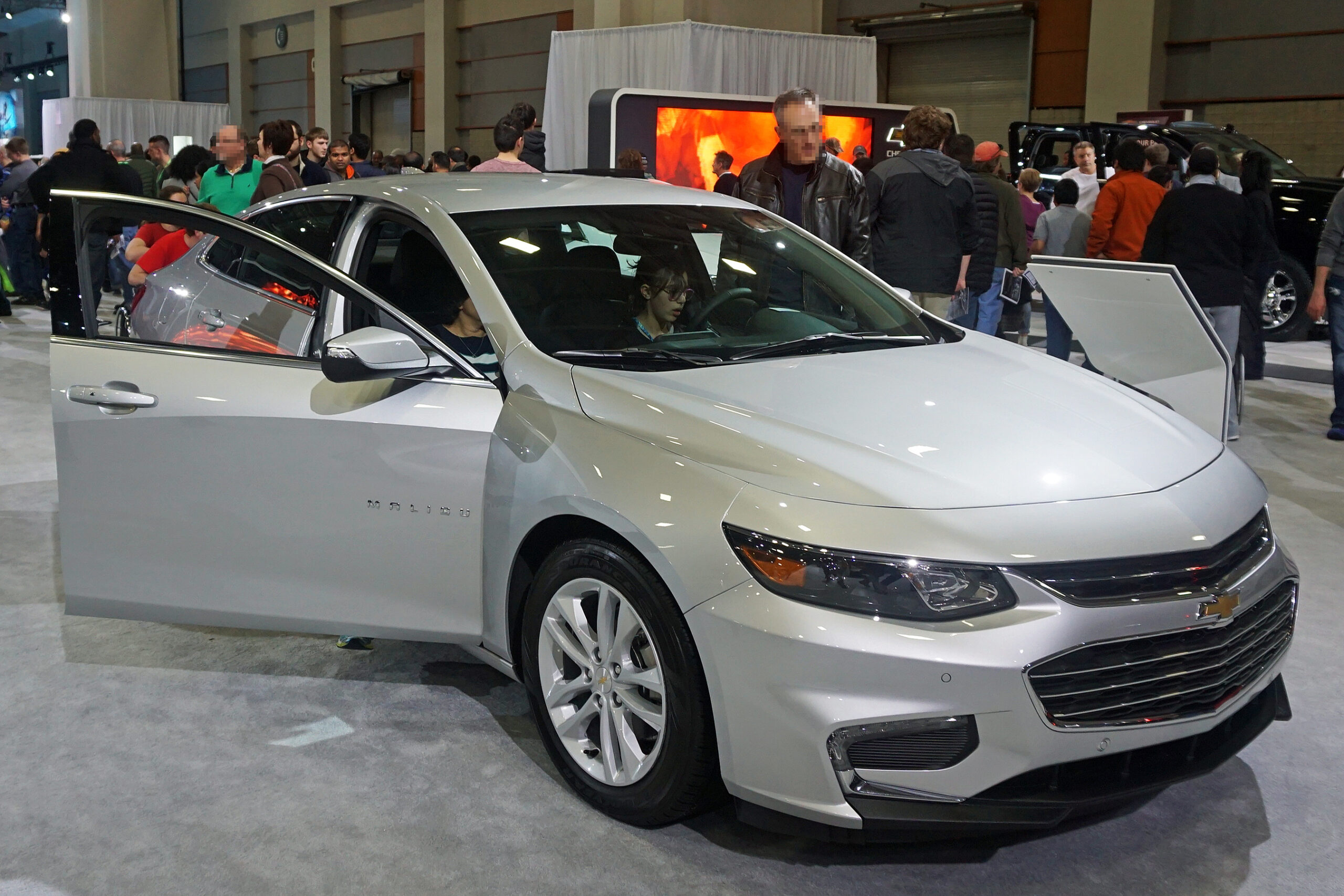
6. **Chevrolet Malibu**
The Chevrolet Malibu, once a popular choice, now reflects a shadow of its former market standing in 2025. This traditional midsize sedan has rapidly lost favor to crossovers, compact SUVs, and EVs. Modern consumers seek elevated ride heights, flexible cargo, and a sense of modernity, which sedans like the Malibu simply don’t offer. This shift renders it obsolete to many, leading to alarming depreciation post-purchase and making it a poor option for quick profit.
The Malibu also suffers from oversaturation and a fleet-car reputation. Numerous units sold to rental companies, government fleets, and corporate accounts mean the used market is flooded. These identical cars, often offloaded en masse after hard use, initiate a pricing race to the bottom. Flippers acquiring a Malibu, even well-kept examples, compete directly with bulk sellers slashing prices. A saturated market with cheaper alternatives severely undermines any profit-making value proposition.
Resale values grimly reflect this reality, with the Malibu depreciating over 40% in its first three years. Even top-tier trims with luxury features do little to slow this decline. Informed 2025 buyers recognize that newer models offer superior features, efficiency, and safety. Faced with a used Malibu versus a similarly priced crossover or newer hybrid, the Malibu almost always loses. This behavior reduces demand, keeps prices low, and makes flipping a gamble.
The Malibu struggles with a branding and identity crisis. While Chevrolet’s truck and EV lineups advance, the Malibu remains unchanged, unremarkable, and unexciting. In a market demanding style, efficiency, or cutting-edge technology, the Malibu delivers none. It symbolizes compromise and outdated thinking. Flippers failing to grasp this, who attempt to resell Malibus, will almost certainly incur losses. Beyond quick depreciation, the Malibu offers no compelling narrative to engage buyers.
Car Model Information: 2023 Chevrolet Malibu FWD 1LT
Name: Chevrolet Malibu
Manufacturer: Chevrolet
ModelYears: 1964–1983,1997–2025
Class: Mid-size car
Layout: Front-engine, rear-wheel-drive layout
Predecessor: Chevrolet Chevelle
Successor: Chevrolet Celebrity
Caption: Ninth generation Chevrolet Malibu
Categories: 1970s cars, 1980s cars, 1990s cars, 2000s cars, 2010s cars
Summary: The Chevrolet Malibu is a mid-size car that was manufactured and marketed by Chevrolet from 1964 to 1983 and from 1997 to 2025. The Malibu began as a trim-level of the Chevrolet Chevelle, becoming its own model line in 1978. Originally a rear-wheel-drive intermediate, GM revived the Malibu nameplate as a front-wheel-drive car in 1997.
Named after the coastal community of Malibu, California, the Malibu has been marketed primarily in North America, with the eighth generation introduced globally. Malibu production in the US ended in November 2024, as the Fairfax plant is being retooled for the upcoming second-generation Chevrolet Bolt. The Malibu is now the last sedan to have been sold by Chevrolet in the US.
Get more information about: Chevrolet Malibu
Buying a high-performing used car >>>
Brand: Chevrolet Model: Malibu
Price: $19,990 Mileage: 48,071 mi.
Read more about: Beyond the Hangar Doors: A Deep Dive into Jerry Seinfeld’s Legendary Porsche Inventory – From Historic Racers to Ultra-Rare Roadsters
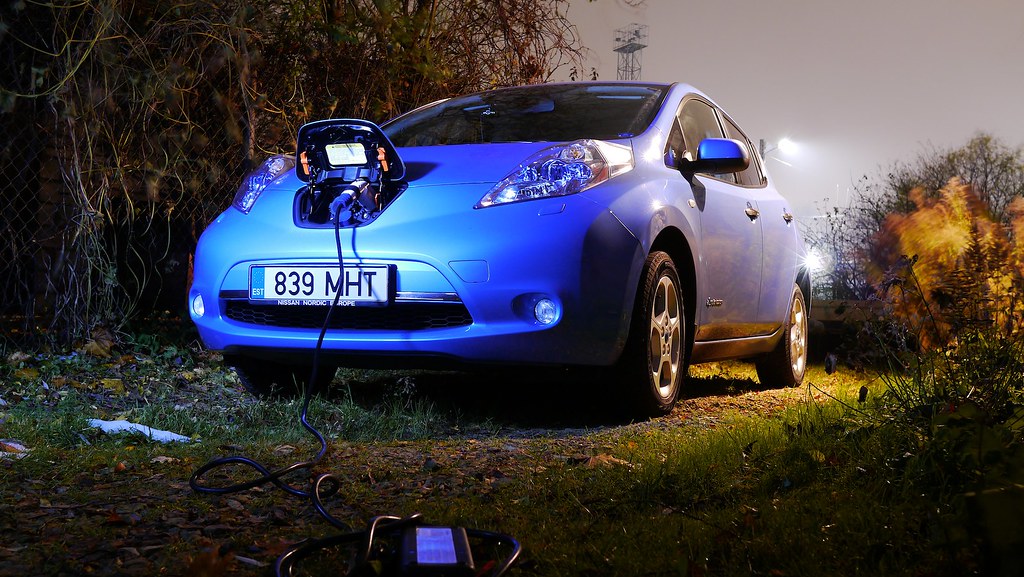
7. **Nissan Leaf**
The Nissan Leaf, once an EV pioneer, now exemplifies how early innovation can rapidly become obsolete in 2025. Despite being an early affordable EV, it struggles with significant technological shortcomings, outdated design, and poor long-term performance. It simply cannot compete in today’s aggressive EV market. For flippers, this offers no upside, only risk, as informed buyers overlook it for better-equipped, longer-range, and more stylish used EVs.
A critical issue for the Leaf is its inferior battery technology. Nissan’s choice of an air-cooled battery pack, lacking thermal management, leads to significantly faster degradation, especially in warmer climates. By three or four years old, a Leaf may lose 20–30% of its range. Used buyers are well aware of this, hindering resale potential. Even low-mileage examples face skepticism without verified battery health, instantly offsetting any perceived value gain with buyer hesitation.
The Leaf’s failure to evolve with the broader EV market presents another problem. While competitors offer fast charging, longer range, and modern infotainment, the Leaf feels stuck in the past. It lacks the performance, digital features, and range demanded by 2025’s entry-level EV buyers. Competing used EVs like the Chevy Bolt EUV and Hyundai Kona Electric offer superior value, significantly outselling the Leaf. There’s no compelling “story” to excite shoppers, as it’s perceived as old tech.
Nissan’s market dynamics for the Leaf are weak; it lacks the brand loyalty and cachet of other EV makers. While Tesla has a cult following, and Hyundai/Kia impress with innovation, the Leaf is a forgotten name. Often buried in classifieds, it’s passed over in inventories, partly due to many units serving as fleet vehicles. Flipping a Nissan Leaf is financially dangerous due to limited interest, heavy depreciation, and significant buyer skepticism, making it one of 2025’s worst flip candidates.
Car Model Information: 2018 Nissan Titan SV
Name: Nissan Leaf
Caption: Third generation Nissan Leaf
Manufacturer: Nissan
Production: October 2010 – present
ModelYears: 2011–present
Class: Unbulleted list
BodyStyle: Unbulleted list
Layout: Front-engine, front-wheel-drive layout
Predecessor: Unbulleted list
Categories: 2020s cars, All articles containing potentially dated statements, All articles with dead external links, Articles containing Japanese-language text, Articles containing potentially dated statements from December 2015
Summary: The Nissan Leaf (Japanese: 日産・リーフ, Hepburn: Nissan Rīfu; stylized as LEAF) is a battery-electric car manufactured by Nissan, produced since 2010. It was offered exclusively as a 5-door hatchback which since then has become a crossover SUV model. The term “LEAF” serves as a backronym to leading environmentally-friendly affordable family car.
The Leaf was unveiled on 1 August 2009 as the world’s first mass market electric and zero-emission vehicle. Among other awards and recognition, it received the 2010 Green Car Vision Award, the 2011 European Car of the Year, the 2011 World Car of the Year, and the 2011–2012 Car of the Year Japan. The Leaf’s range on a full charge has been steadily increased from 117 km (73 miles) to 364 km (226 miles) (EPA rated) by the use of larger battery packs and several minor improvements.
As of September 2021, European sales totalled more than 208,000, and as of December 2021, over 165,000 had been sold in the U.S., and 157,000 in Japan. Global sales across both generations totalled 577,000 by February 2022. The Leaf was the world’s all-time top selling plug-in electric car until it was surpassed in early 2020 by the Tesla Model 3.
Get more information about: Nissan Leaf
Buying a high-performing used car >>>
Brand: Nissan Model: Leaf
Price: $21,685 Mileage: 89,835 mi.
Read more about: Are EVs Really Worth It? The 13 Downsides Nobody Tells You About Before You Buy
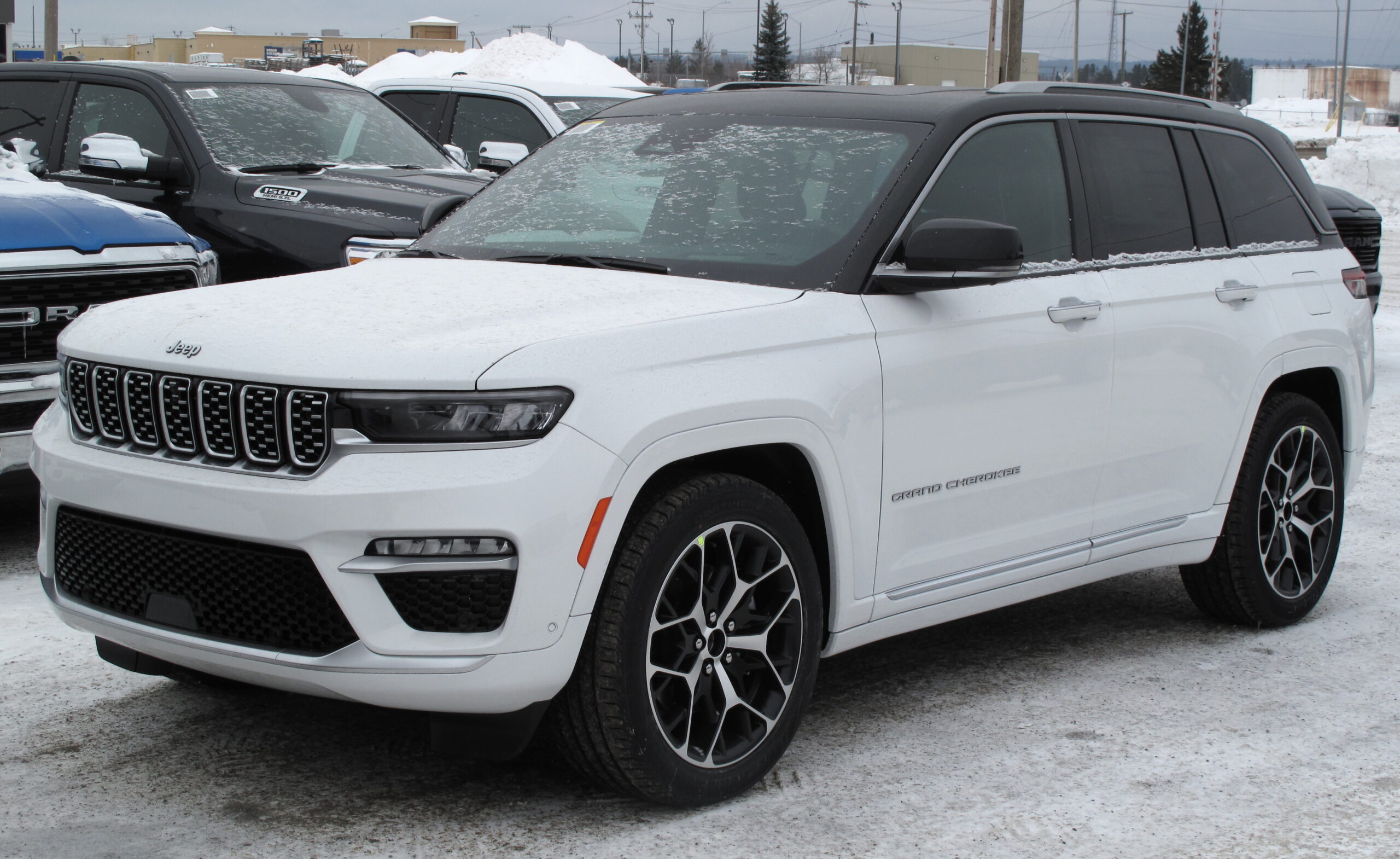
8. **Jeep Cherokee**
In 2025, the Jeep Cherokee is a vehicle caught between identities, lacking the ruggedness of a Wrangler and the polish of a Grand Cherokee. It has grown increasingly irrelevant, a brutal reality for flippers. Its former niche as a “smaller off-road alternative” has crumbled. Now an awkward, aging compact SUV, it fails against better-styled, equipped, and more efficient rivals. For flippers, this means immediate depreciation and a nearly impossible profit in resale.
Brand cannibalization is a significant problem for the Cherokee. Jeep’s expanding lineup overshadows its original appeal, with the Compass being cheaper and the Grand Cherokee more desirable. The introduction of plug-in models like the Grand Cherokee 4xe further modernizes the brand, leaving the gas-only Cherokee behind. Many Jeep dealers, eager to clear stock, apply heavy discounts, destroying resale value. Flippers often find their used Cherokees competing with discounted new models, resulting in a losing proposition.
Dated technology, interior quality, and reliability concerns also plague the Cherokee. While Jeep’s infotainment was once top-tier, rivals now surpass it. Owners report issues with transmission tuning, engine reliability (2.4L Tigershark), and electronic glitches. This eroding trust damages resale values, even for good models. Buyers are skeptical of used Cherokees without deep discounts, forcing flippers into a price race to the bottom, prioritizing quick sales over profit.
The Cherokee’s reputation and market trends are concerning. Its “Jeep” halo has diminished in the compact SUV segment; unlike the Wrangler, it lacks a loyal following or distinctive character. It’s neither an off-roader’s first choice nor premium enough for luxury seekers, leaving it in a demand-deprived middle tier. For flippers, this is a nightmare: a vehicle without a loyal buyer base, facing internal competition, and no updates. Essentially, the Cherokee is a technically functional but utterly uninspiring SUV. Avoid it for profitable flipping.
Car Model Information: 2016 Jeep Cherokee Latitude
Name: Jeep Cherokee
Caption: Fifth generation (KL)
Manufacturer: Jeep
Aka: Jeep Liberty
ModelYears: unbulleted list
Class: unbulleted list
Layout: unbulleted list
Chassis: unbulleted list
Categories: All-wheel-drive vehicles, Anti-Indigenous racism in the United States, Articles with short description, Compact sport utility vehicles, Crossover sport utility vehicles
Summary: The Jeep Cherokee is a line of sport utility vehicles (SUV) manufactured and marketed by Jeep over six generations. Marketed initially as a variant of the Jeep Wagoneer (SJ), the Cherokee has evolved from a full-size station wagon (before the SUV description came into use) to one of the first compact SUVs and into its latest generation as a crossover SUV.
Named after the Cherokee tribe of Native Americans in the United States, Jeep has used the nameplate in some capacity since late 1973 when American Motors Corporation (AMC) introduced the 1974 model year line.
Production of the Cherokee ended in February 2023. The Cherokee nameplate has since been used by the Grand Cherokee and its extended version, the Grand Cherokee L.
Get more information about: Jeep Cherokee
Buying a high-performing used car >>>
Brand: Jeep Model: Cherokee
Price: $9,865 Mileage: 109,019 mi.
Read more about: Uncovering Unprecedented Value: A Consumer’s Guide to 12 SUVs with Significant Price Drops in 2025
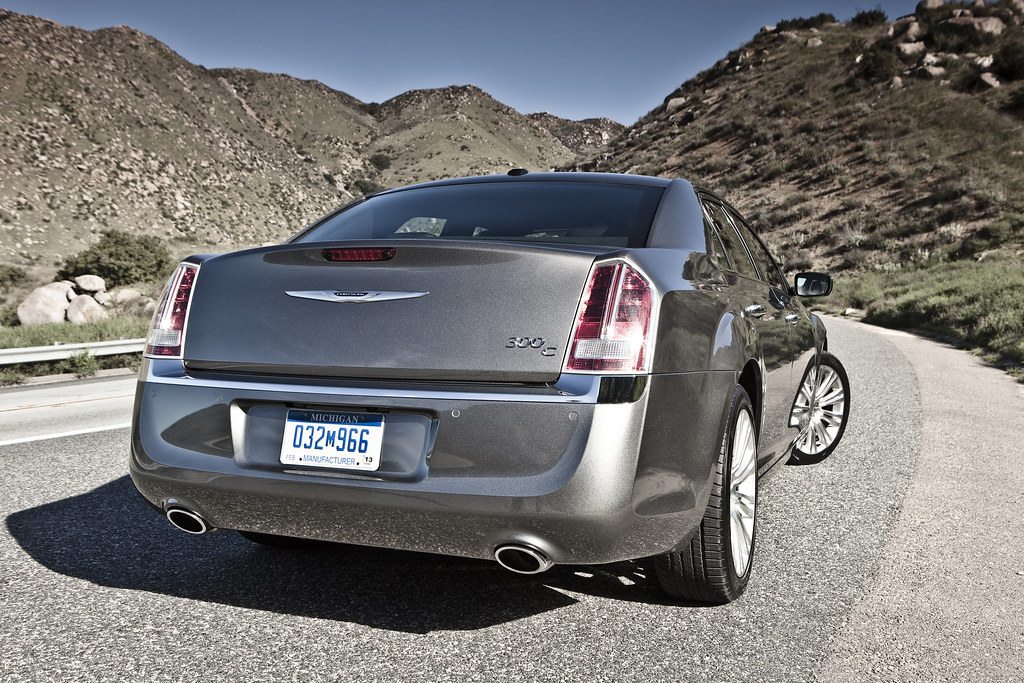
9. **Chrysler 300**
The Chrysler 300, once a symbol of American luxury and swagger, finds that era firmly in the rearview mirror by 2025. It has become a symbol of stagnation, essentially unchanged for over a decade. This stasis severely impacts its resale value, especially as buyer expectations have evolved. The full-size sedan market has nearly vanished, and within that segment, the 300 lacks appeal. Flippers face disaster as this once-desirable car is now a last resort, selling for far below its discounted purchase price.
The 300’s market appeal is significantly limited. While a niche of V8, RWD enthusiasts remains, they are increasingly rare. Younger buyers see the 300 as dated and inefficient, while older buyers prefer crossovers or hybrids. Chrysler has not modernized the platform—no hybrid, EV, or major redesign since 2011. This makes the 300 feel like a relic compared to rivals like the Toyota Crown or Genesis G80. Flipping a Chrysler 300 today is akin to selling a VHS player in the 4K streaming era.
Massive depreciation and brand erosion also plague the 300. Chrysler, with only the 300 and Pacifica, has minimal brand equity. Buyers no longer view Chrysler as premium or aspirational, but rather old-fashioned and likely to be discontinued. This perception directly impacts resale. Even top-trim 300s sell far below their purchase price within a year. Flippers seeking exclusivity or uniqueness find no “collector value,” only a dying model from a struggling brand.
The 300 is expensive to run and maintain compared to modern rivals. It offers poor fuel economy, a floaty ride, and difficult urban parking. Its once-highlighted interior now feels plasticky and dated. Many competitors provide superior materials, advanced tech, and driver assistance at comparable or lower prices. Flipping success relies on emotional appeal or perceived value, both lost by the 300. Buyers desire efficient, tech-packed vehicles with a future; the 300 remains stuck in the past. Flipping it in 2025 is an unrewarding struggle.
Car Model Information: 2019 Chrysler 300 Limited
Name: Chrysler 300
Aka: Lancia Thema
Manufacturer: Chrysler (automotive brand)
Production: February 1, 2004– December 2023
ModelYears: 2005–2023
Class: Executive car
Layout: Front-engine, rear-wheel-drive layout,automobile layout
Predecessor: Chrysler 300M,Chrysler Concorde,Chrysler Intrepid
Categories: 2010s cars, All articles with dead external links, All articles with unsourced statements, Articles with dead external links from June 2025, Articles with short description
Summary: The Chrysler 300 is a full-size car produced by Chrysler under Stellantis North America and its predecessors. The first generation (model years 2005–2010) was availabe as a four-door sedan and station wagon, in the second generation (model years 2011–2023) was available soley as a sedan.
The second generation 300 was marketed as the Chrysler 300C in the United Kingdom and Ireland and as the Lancia Thema in the remainder of Europe.
Get more information about: Chrysler 300
Buying a high-performing used car >>>
Brand: Chrysler Model: 300
Price: $17,388 Mileage: 105,549 mi.
Read more about: Manhattan Unveiled: A Comprehensive Journey Through the Heart of New York City’s Enduring Legacy
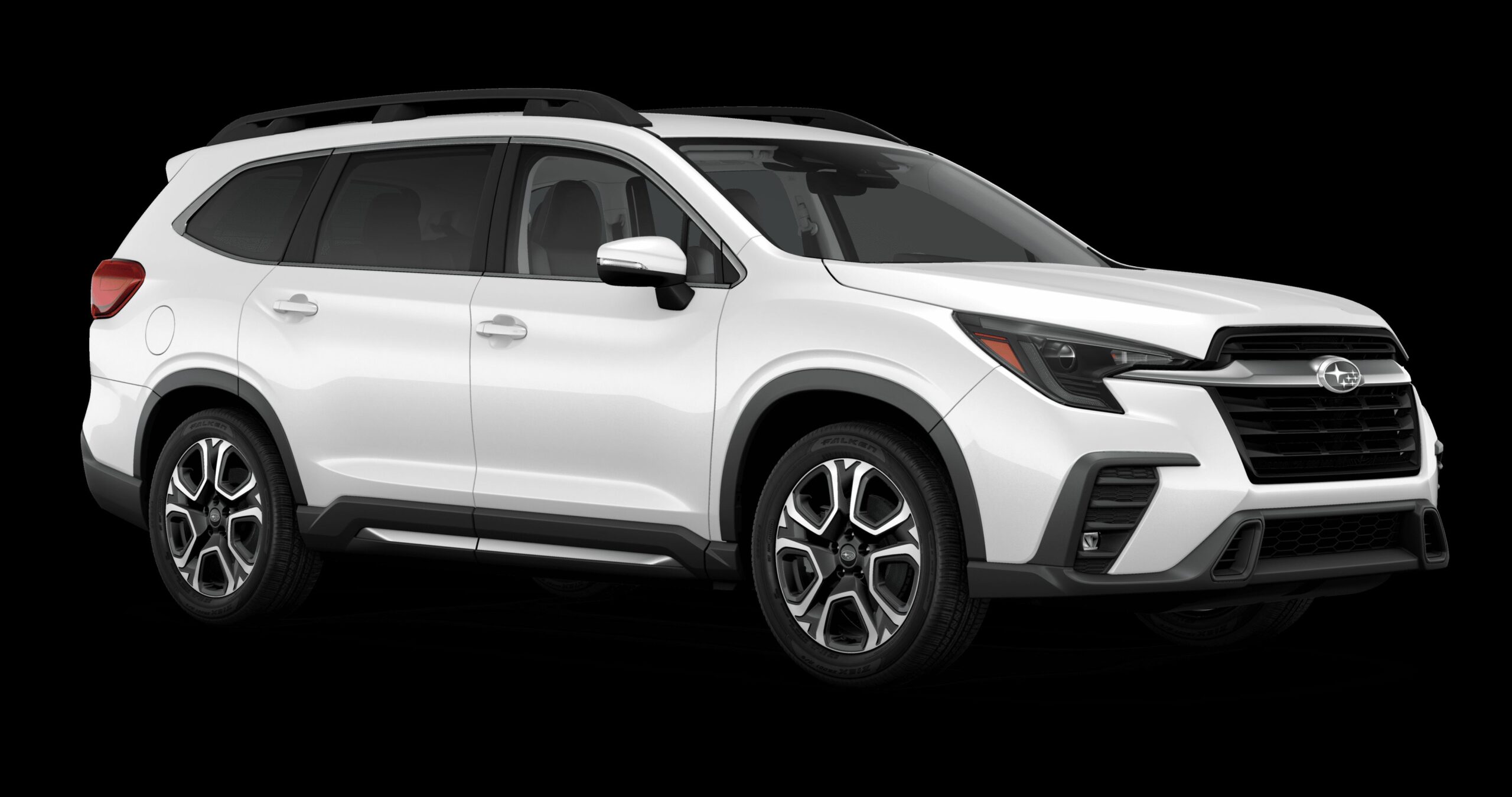
10. **Subaru Ascent**
The Subaru Ascent launched with high hopes as the brand’s three-row SUV, boasting safety, AWD, and a loyal base. However, five years on, it’s one of Subaru’s least profitable and most disappointing flips. While new buyers like its practicality, used car shoppers are wary. This hesitancy has driven resale values down unexpectedly, making the Ascent a risky, often unprofitable resale vehicle.
The Ascent’s mechanical reliability is a major downfall, tarnishing Subaru’s strong reputation. Early models suffered from CVT problems, engine stalling, and electrical gremlins, a stigma not fully shed by later models. Informed buyers often find forum discussions and recall notices, dampening confidence. For flippers, this creates a heavy burden: wary buyers, difficult negotiations, and a slow resale. Widespread mechanical doubts, particularly in family vehicles, hinder strong used prices.
The Ascent also faces a value perception problem. Unlike the Outback or Forester, it doesn’t fully benefit from Subaru’s legacy of loyal ownership and high retained value. It’s newer, less proven, and less beloved. In a crowded three-row segment, the Ascent struggles to stand out, making it hard for flippers to justify premium pricing and thus pushing values down.
Compared to robust competition, the Ascent often lacks in refinement, interior quality, and power. Many rivals provide smoother rides, more luxurious cabins, or more potent engines at similar or lower prices. For flippers, even a well-maintained Ascent struggles against vehicles offering superior value to discerning used car buyers. It’s a pragmatic new car choice but precarious for anyone seeking quick resale profit.
**Essential Lessons for Sustained Flipping Success**
Car Model Information: 2021 Subaru Ascent Premium 7-Passenger
Name: Subaru Ascent
Manufacturer: Subaru
Aka: Subaru Evoltis
Production: 2018–present
ModelYears: 2019–present (North America)
Assembly: Lafayette, Indiana
Class: Mid-size crossover SUV
BodyStyle: SUV
Layout: Front-engine, four-wheel-drive layout
Platform: Subaru Global Platform
Related: Subaru Legacy (seventh generation),Subaru Outback
Engine: Subaru FA engine#FA24F,Turbocharger,Flat-four engine
Powerout: 260 hp
Abbr: on
Transmission: Lineartronic,Continuously variable transmission
Wheelbase: 113.8 in
Length: 196.8 in
Width: 76.0 in
Height: 71.6 in
Weight: convert
Predecessor: Subaru Tribeca
ModelCode: WM
Categories: 2020s cars, All-wheel-drive vehicles, All Wikipedia articles written in American English, All articles with a promotional tone, Articles with a promotional tone from December 2017
Summary: The Subaru Ascent is a mid-size crossover SUV produced by Subaru. In some markets, it is sold as the Subaru Evoltis. It is the largest automobile Subaru manufactures. The seven or eight-seat passenger SUV, with the design based on the VIZIV-7 concept, made its debut at the LA Auto Show on November 28, 2017 and became available in the third quarter of 2018. It has an American-built predecessor, the Tribeca. The Ascent is not available in Japan.
Get more information about: Subaru Ascent
Buying a high-performing used car >>>
Brand: Subaru Model: Ascent
Price: $23,804 Mileage: 79,540 mi.
Read more about: Seriously, What Happened? Diving Deep into 12 Once-Popular Minivans Families Just Don’t Drive Anymore
As our journey through the high-stakes 2025 car flipping world concludes, success clearly demands more than just finding a “deal.” It requires deep understanding of market dynamics, buyer psychology, and a keen eye for both trends and value traps. The profitable flips—like the Toyota GR Corolla, Porsche 911 (997.2), Ford Bronco Raptor, Tesla Model Y Performance, and Toyota Tacoma TRD Pro—share scarcity, cultural relevance, mechanical trust, and emotional appeal. They are aspirational statements or technological marvels commanding premiums. Conversely, vehicles leading to financial loss—the Chevrolet Malibu, Nissan Leaf, Jeep Cherokee, Chrysler 300, and Subaru Ascent—serve as stark warnings. They suffer from oversaturation, outdated tech, brand erosion, reliability issues, or disconnect from buyer preferences. In this dynamic landscape, avoiding money pits is as crucial as identifying gems. Staying informed empowers you to source smarter, buy wiser, and maximize returns in the thrilling pursuit of turning junk into jewels.

